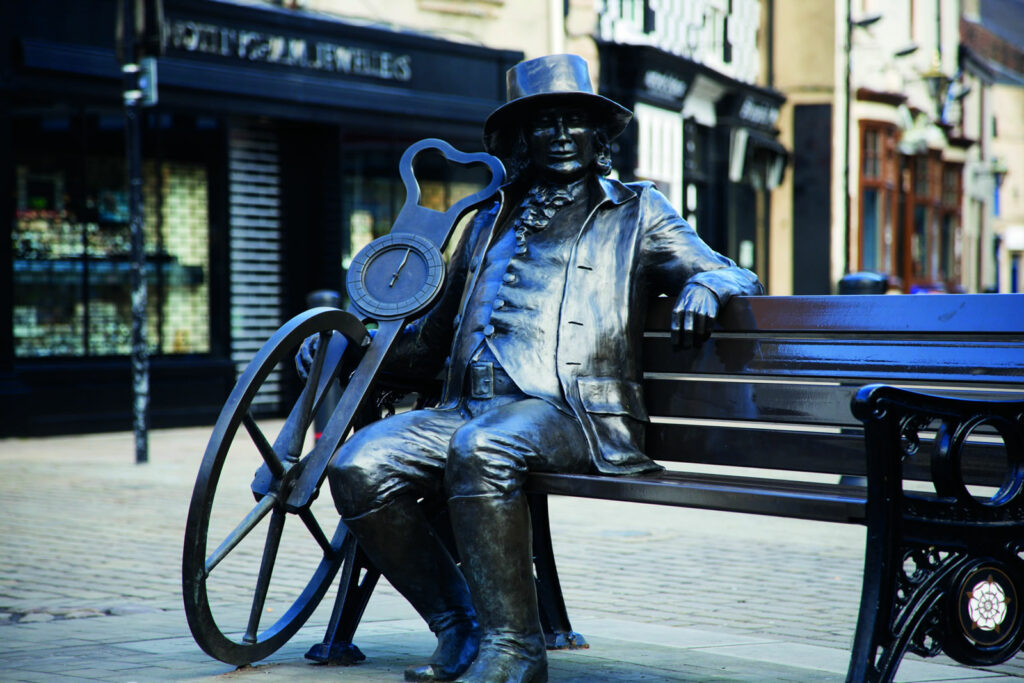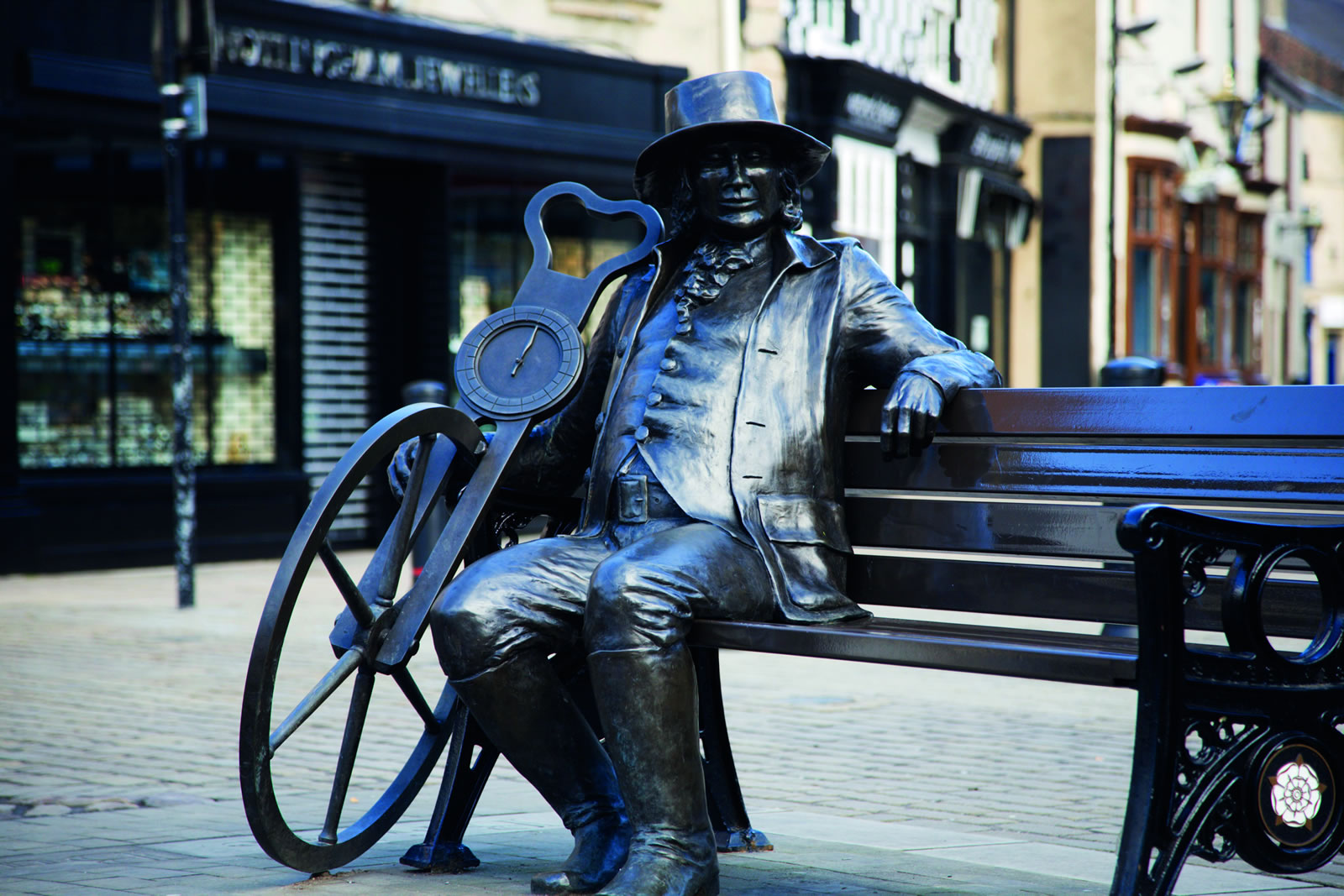Welcome to Yorkshire
Inspiration • January 12th, 2017
|2017 marks 300 years since the birth of Blind Jack from Knaresborough. Joe Shute tells the tale of the legendary musician, drinker, gambler, huntsman, adventurer, trader, smuggler, and road builder, who overcame disability in the most amazing way.

Jack of all trades
2017 marks 300 years since the birth of Blind Jack from Knaresborough. Joe Shute tells the tale of the legendary musician, drinker, gambler, huntsman, adventurer, trader, smuggler, and road builder, who overcame disability in the most amazing way.
In a quiet northernmost corner of the graveyard of All Saints Church, Spofforth, lies the strapping 6ft 2ins frame of John Metcalf. It is a tranquil final resting place for Blind Jack of Knaresborough. At first glance, the casual visitor would not even suppose a person of particular note was buried there. But stop to read the 16 lines of text carved into the moss-covered stone, and a picture of a different man begins to emerge.
His epitaph ends, “Reader! Like him, exert thy upmost talent given”. For more than most others born upon this earth, that is what Blind Jack did.
Metcalf was supposedly condemned into one life when he was rendered completely blind by smallpox at the tender age of six. For many children of low-birth in the early part of the 18th century that would have been a death sentence of sorts. But through immeasurable talent and sheer force of will he ended up changing his fate.
What did he become? The list is nothing short of incredible: musician, horse-dealer, military adventurer, smuggler, and the man who shaped the modern motorway system of the north. Three hundred years since his birth in 1717 the giant image of Blind Jack still dominates the North Yorkshire town of Knaresborough.
For the tricentenary celebrations in 2017, the town is putting on numerous community events to commemorate the life of Blind Jack. There are also plans to name a special ale after him, a particularly fitting tribute to a man who was in his moments of weakness an incorrigible drinker and gambler.
But in truth, one could visit Knaresborough at any time in any year and immerse themselves in the life of John Metcalf.
In the ancient market square, where there has been a weekly market held continually since 1310, a statue of Blind Jack sits beaming out, clutching the viameter (road surveyor’s measuring wheel) he used to build new turnpikes across Yorkshire. A few steps away is the Blind Jack Tavern, whose exterior windows are decorated as painted murals to Metcalf with his famous fiddle in hand.
Prior to his career as a civil engineer he was a keen musician and regularly played the pubs and hotels of the burgeoning spa town of Harrogate. In particular, he frequented the Royal Oak – where he met his future wife Dorothy “Dolly” Benson whose father was landlord of the pub – and the Queen’s Head (now the Cedar Court Hotel) where he serenaded guests over their breakfasts.
“Today he remains a real inspiration to people,” says Roger Hewitt, the town crier of Knaresborough, standing at its market cross.
Hewitt, who is the latest in a long line of town criers dating back to the 17th century, says he always points himself towards the pub portrait of John Metcalf when making his weekly proclamations, to better bounce the sound around the square.
“Everybody in Knaresborough loves the link to his past,” he says. “It’s because he could turn his hand to so many things that lots of people can identify with Blind Jack. They think if he can do that then they should try something outside of their comfort zone as well.”
A few minutes away from the market, near to Knaresborough’s St John the Baptist Church, is a plaque marking the spot where Metcalf was born in 1717 - in a cottage whose garden adjoined the churchyard and is now sadly long gone.
By the time of his birth, Knaresborough was already on the tourist map. In 1717 the great writer and journalist Daniel Defoe was among those to travel here. As ever more visitors came to take the waters in Harrogate’s famous mineral springs, they would also cross the River Nidd to wander through Knaresborough’s medieval streets and visit the famous Dropping Well whose waters could turn items to stone.
Today it is named after Mother Shipton, England’s most famous ever prophetess who was reputedly born in a nearby cave. During her lifetime Mother Shipton foretold the Great Fire of London and sinking of the Spanish Armada and seemingly held the fate of the country’s rulers in her hands.
As Blind Jack’s biographer Arnold Kellett points out, Metcalf was not born into “abject poverty” but neither was there much in the way of opportunities. Blind Jack’s parents are described plainly in his own memoirs as “working people”.
Rather, from a young age he was a serial networker. Through his music he regularly rubbed shoulders with wealthy and aristocratic families and was invited to play at numerous grand country estates across the country. He nurtured high-ranking friendships and was taken under the wing of a patron, William Thornton, who was later to become MP for York. That friendship was to lead Blind Jack to war. During the Jacobite Rebellion of 1745, Thornton raised a company of men to send over the border to Scotland. He named them the Yorkshire Blues and enlisted Blind Jack as chief recruiter and musician. Metcalfe survived brutal combat and capture by the Jacobites to rise to prominence within the ranks for his skill at rabble rousing.
It was only after the Battle of Culloden in 1746 that he returned home, to the news that Dolly had given birth to their fourth child. But even if ensconced back in Knaresborough, he was still not ready to settle into family life. His reputation and contacts book bolstered by his time in Scotland, Blind Jack turned his hand to smuggling.
He was already a sharp wheeler dealer and exponent of what was known as “the Yorkshire Bite”. From his hometown he set up a smuggling route right up to Scotland. All manner of contraband was whisked away from the prying eyes of the authorities under Blind Jack’s command. According to his biographer he even receives an “honorable” mention in the annals of Scottish trafficking.
The chance for a more wholesome career choice came about in 1752 with the announcement of a new turnpike to be built between Harrogate and Boroughbridge. Blind Jack bid for the contract and won. It was to prove the first of an estimated 180 miles of road that he built in Yorkshire and four other counties. His aptitude for completing the work within budget and over treacherous terrain was unparalled.
“On foot and horseback he had explored more of Britain than the majority of his contemporaries,” says Knaresborough resident Bernard Higgins, who is helping lead the tricentenary celebrations of Blind Jack and before retiring used to teach at Henshaws College for the Blind and Partially Sighted in Harrogate. “In particular he knew the northern part of the country better, by smell and feel and touch than most sighted natives.”
Blind Jack only retired in 1792, at the age of 75 and already a widower after Dolly had died in 1778 while he was roadbuilding in Cheshire. It was not until 1810, at the age of 93, that Blind Jack was to finally join her, leaving behind four children and 20 grandchildren.
For Higgins and many other Knaresborough residents, Metcalf still does not receive the attention outside of the town that is warranted by his achievements. “He is not forgotten but neither has he been elevated to the position that a person with his courage and perseverance deserves,” he says. Perhaps in this 300th year since his birth, Blind Jack will finally assume his rightful place as one of Yorkshire’s most inspirational sons.
This article was taken from This is Y 2017






Comments
0 Contributions
No comments yet. Be the first to start the conversation!